
The Red Bison from the Ceiling of Altamira Photo westhillscollege/Don's Maps
The Emblem of Altamira and Spain
Altamira
Altamira
Santillana
del Mar, Cantabria, Spain.
35 600+16 500-14 000 BP
Altamira is the quintessential painted, paleolithic cave, perhaps even more so than the better known, contemporaneous Cave of Lascaux.
The cave is 270 metres long and consists of a series of twisting passages and chambers. The main passage varies from two to six metres in height. Archaeological excavations in the cave floor found rich deposits of artefacts. The oldest paintings come from the Lower Solutrean at 35 600 BP, (U/Th dates 2012), the later from the Lower Magdalenean (between 16 500 and 14 000 BP). Both periods belong to the Paleolithic or Old Stone Age. In the millennia between these two occupations, the cave was evidently inhabited only by wild animals. Human occupants of the site were well-positioned to take advantage of the rich wildlife that grazed in the valleys of the surrounding mountains as well as the marine life available in nearby coastal areas. Around 13,000 years ago a rockfall sealed the cave's entrance, preserving its contents until its eventual discovery, which occurred after a nearby tree fell and disturbed the fallen rocks.
Human occupation was limited to the cave's mouth, although paintings were created throughout the length of the cave. The artists used charcoal and ochre or haematite to create the images, often diluting these pigments to produce variations in intensity and creating an impression of chiaroscuro. They also exploited the natural contours in the cave walls to give their subjects a three-dimensional effect. The polychrome ceiling is the most impressive feature of the cave, depicting a herd of extinct Steppe Bison (Bison priscus) in different poses, two horses, a large doe, and possibly a wild boar.
Dated to the Magdalenean occupation, these paintings also include
abstract shapes in addition to animal subjects. Solutrean paintings
include images of horses and goats, as well as handprints that were
created when artists placed their hands on the cave wall and blew
pigment over them to leave a negative image. Numerous other caves in
northern Spain contain Palaeolithic art, but none is as complex or
well-populated as Altamira.
From Wikipedia/Don's
Maps

The
Red Bison from the Ceiling of Altamira Photo westhillscollege/Don's
Maps
The Emblem of Altamira and Spain
The Great Hunt on the Ceiling of Altamira
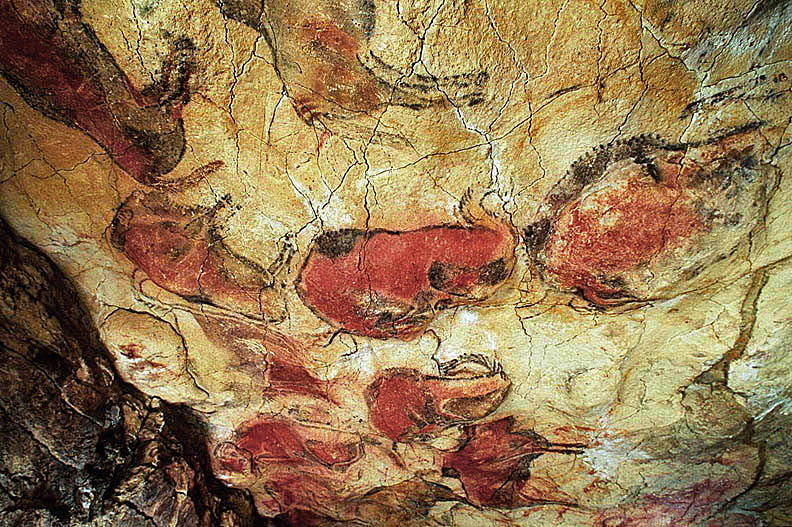
Magdalenian
part of the densely populated ceiling

Tracing
of the Magdalenian part of the Altamira celing in which the photos
below have been marked
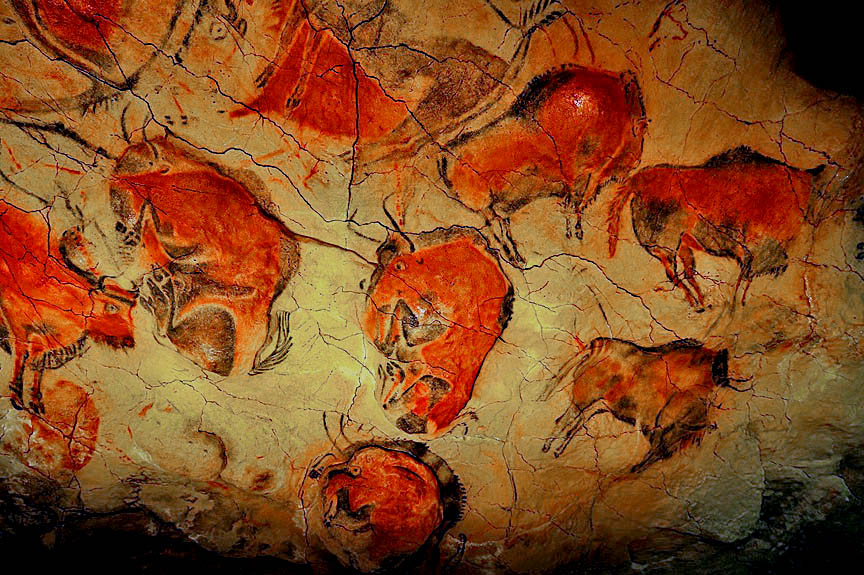
Photo
of the marked section of the ceiling
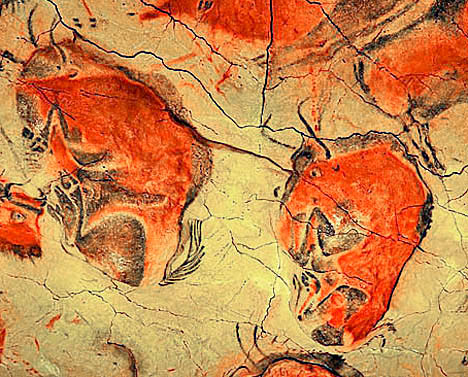
Enlarged
center with the two dying beasts
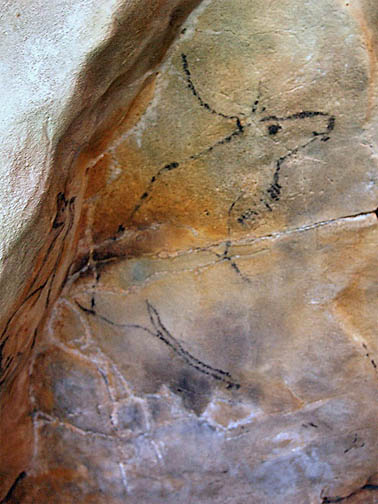
A
drawing of a reindeer
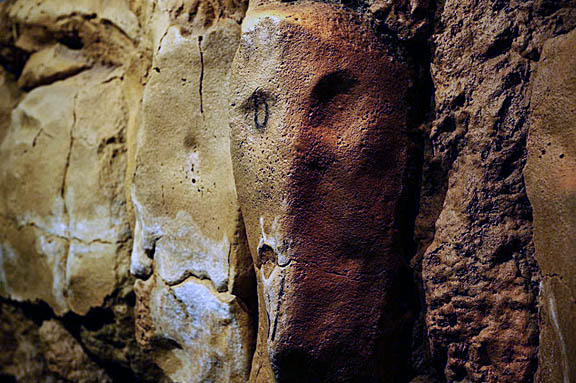
Naturally
sculpted parietal face, the eye is paleolithic!
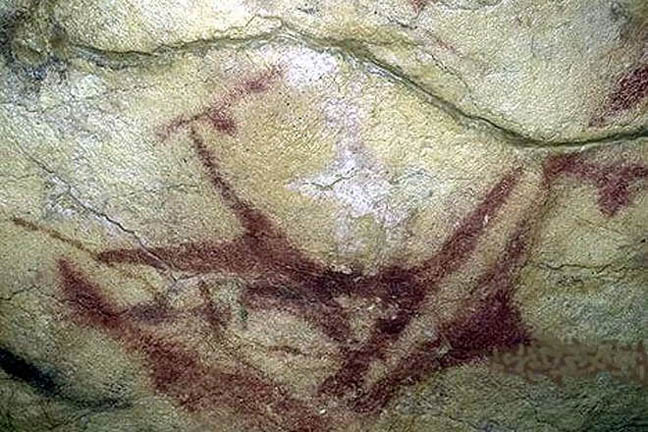
An
elaborate “aviform”, see Neanderthals/Pech-Merle for an
explanation
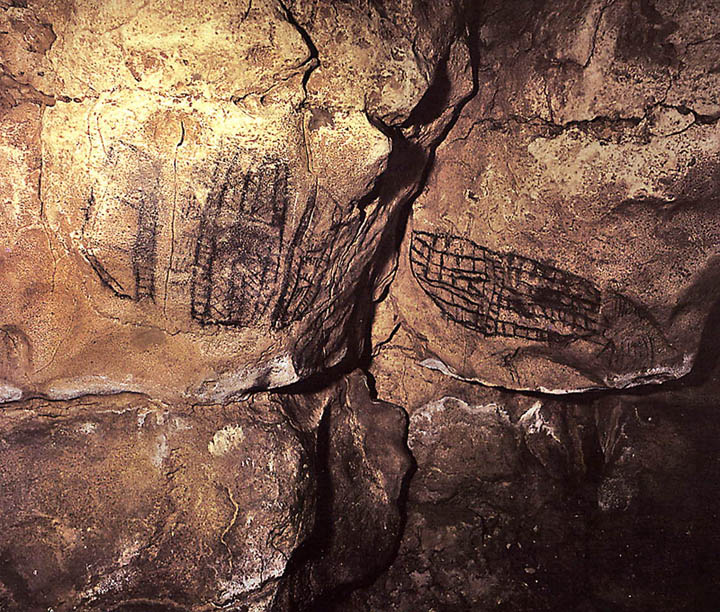
“Techtiforms”-
Counters? - Calendars? -In any case, higher mathematics

The
Inhabitants – two or three men and four or five women –
praying?
tracings from various sections of the cave, probably
after 14 000 BP
See Cueva de los Casares for more of these
bird-men graffiti